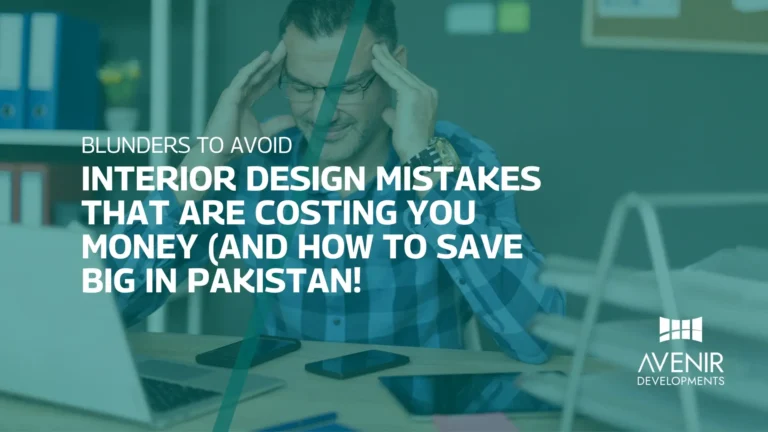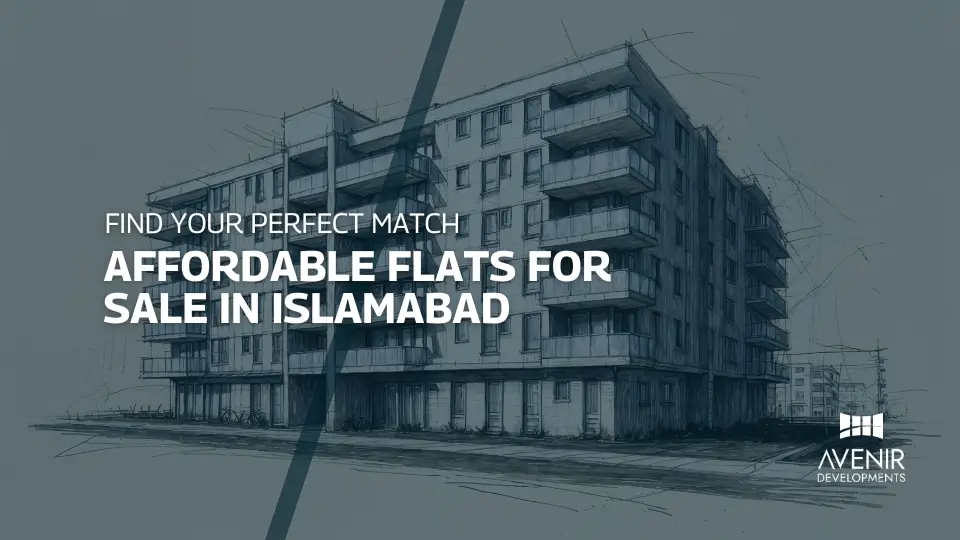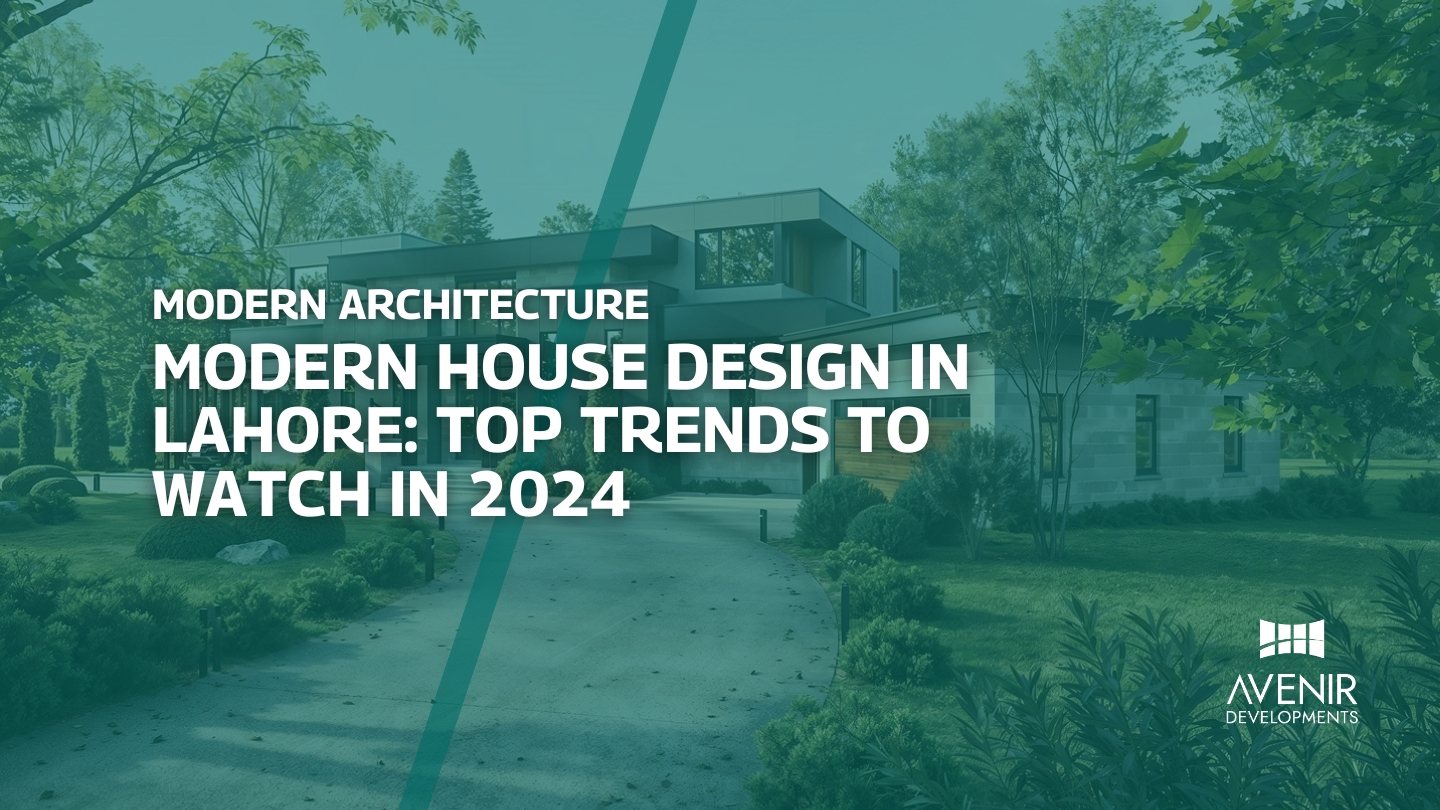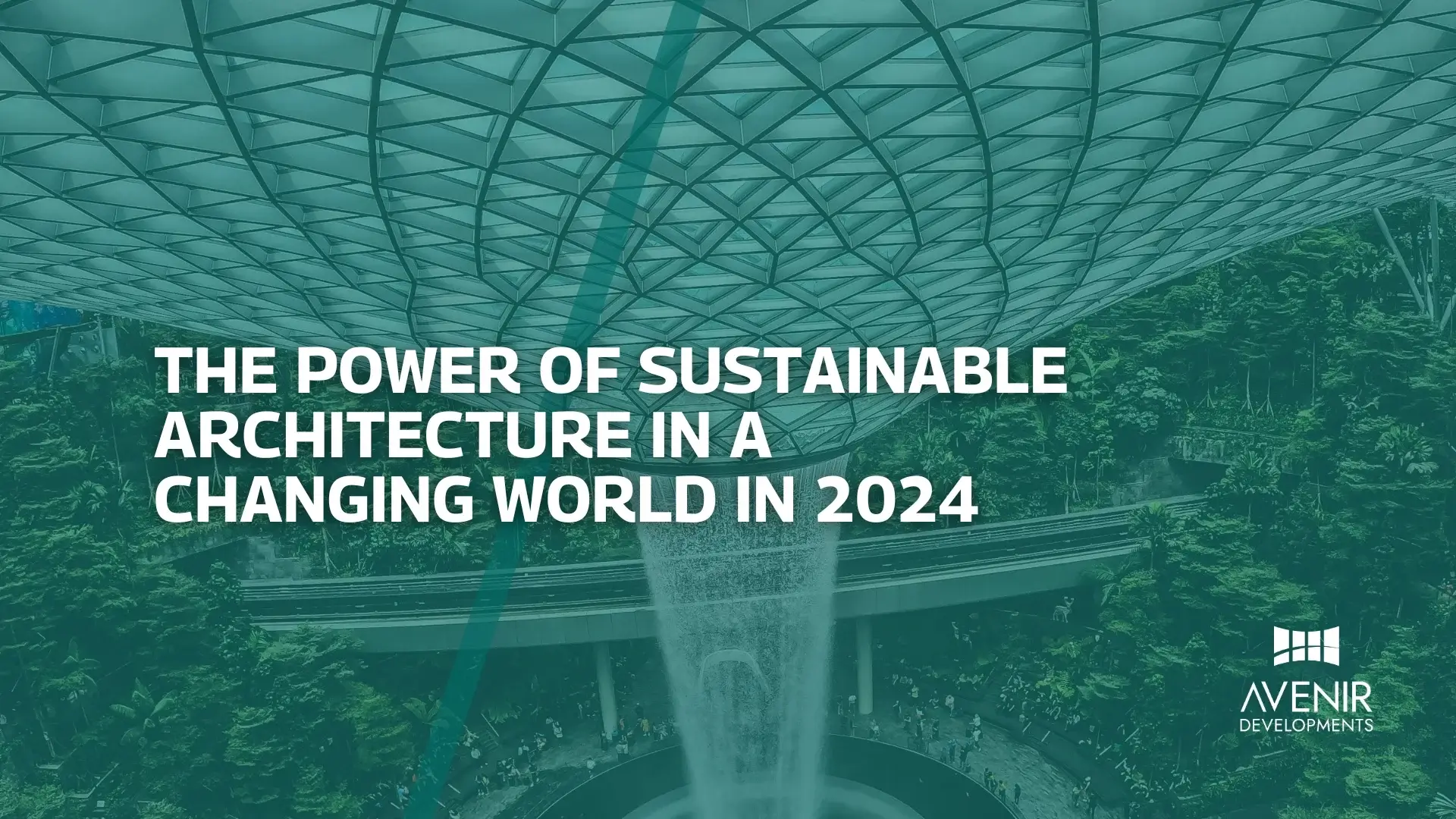Have you ever walked into a beautifully decorated home, only to feel like something’s just…off? Maybe the colors clash, the furniture overwhelms the space, or you can’t quite put your finger on it, but the overall vibe just doesn’t work. As an architect and interior designer with over a decade of experience in Pakistan and abroad, I’ve seen countless homes that could have been stunning if not for a few costly interior design mistakes.
I’m not talking about minor mishaps like a misplaced vase or a rug that’s a tad too small. I’m talking about those interior design mistakes that can silently drain your wallet, leaving you with a home that feels more like a burden than a sanctuary.
Remember that time I was in Dubai, working on a luxury villa project? The client had spent a fortune on imported marble, custom-made furniture, and the latest smart home technology. But the moment I walked in, I was struck by how cold and uninviting the space felt. The problem? An overemphasis on trends at the expense of functionality and personal style. It was a classic case of throwing money at a problem without understanding the root cause.
The good news is that you don’t have to break the bank to create a beautiful and functional home in Pakistan. In fact, avoiding common interior design mistakes can actually save you a significant amount of money in the long run. So, if you’re ready to transform your house into a home that reflects your personality, style, and budget, then keep reading. I’m about to reveal the most common interior design mistakes that are costing you money and share expert tips on how to avoid them.
Let’s dive in!
Interior Design Mistakes: A Global and Pakistani Perspective
Interior design is more than just making a space look pretty; it’s about creating an environment that enhances our lives. Whether you’re in a bustling city like Karachi or a historic neighborhood in Lahore, the way you design your home has a profound impact on your mood, productivity, and overall well-being.
Throughout history, interior design has evolved from a luxury reserved for the elite to a necessity for creating functional and aesthetically pleasing living spaces. In ancient civilizations like the Indus Valley, intricate carvings and vibrant colors adorned homes, reflecting the cultural values and beliefs of the time.
As societies progressed, so did interior design. The Mughal era in Pakistan saw the introduction of opulent palaces with intricate geometric patterns, while the British colonial period brought European styles like Victorian and Art Deco. Today, interior design in Pakistan is a vibrant mix of traditional elements and modern influences, drawing inspiration from both local heritage and global trends.
While there’s no one-size-fits-all approach to interior design, some common mistakes can turn a dream home into a costly nightmare. From poor space planning to impulsive purchases, these errors can quickly add up and leave you with a space that’s not only unappealing but also financially draining.
In Pakistan, where budgets are often tight and resources limited, avoiding these mistakes is even more crucial. A well-thought-out design can help you maximize your space, create a comfortable and functional home, and save money in the long run.
So, what are these costly interior design mistakes? And how can you avoid them? Let’s delve deeper into the common pitfalls that plague Pakistani homes and explore practical solutions that won’t break the bank.
Latest Trends in Interior Design: Pakistan and Beyond
Interior design is constantly evolving, and staying on top of the latest trends can be both exciting and overwhelming. In Pakistan, we’re seeing a fascinating blend of traditional aesthetics with contemporary design elements. The use of locally sourced materials like wood, brass, and handwoven textiles is gaining popularity, adding a touch of cultural heritage to modern spaces.
One notable trend is the revival of traditional Pakistani crafts like truck art and block printing. These vibrant patterns and motifs are being incorporated into furniture, textiles, and wall art, creating unique and eye-catching interiors that celebrate Pakistani culture.
Another trend that’s gaining momentum in Pakistan is the focus on sustainable and eco-friendly design. As awareness of environmental issues grows, homeowners are increasingly opting for energy-efficient lighting, recycled materials, and indoor plants to create healthier and more sustainable living spaces.
The government is also playing a role in promoting sustainable design practices. In a recent announcement, the Ministry of Climate Change outlined plans to incentivize the use of renewable energy and energy-efficient building materials in the construction industry. This initiative is expected to encourage more homeowners and designers to adopt eco-friendly practices in their projects.
On the global stage, we’re witnessing a shift towards minimalism and functionality. Clean lines, neutral colors, and uncluttered spaces are in vogue, as people seek simplicity and tranquility in their homes. The use of technology is also transforming the way we design our interiors. From smart home systems to voice-activated assistants, technology is becoming an integral part of our living spaces, offering convenience, comfort, and enhanced functionality.
News sources like Dawn and The Express Tribune have been reporting on the latest trends in Pakistani interior design, highlighting the growing interest in sustainable materials, local crafts, and the fusion of traditional and modern styles. These trends reflect a growing awareness of the importance of creating functional, aesthetically pleasing, and environmentally conscious spaces that cater to the unique needs and preferences of Pakistani homeowners.
However, while it’s important to stay informed about the latest trends, it’s equally important to avoid getting carried away by them. Remember, trends come and go, but good design is timeless. The key is to incorporate elements that resonate with your personal style and create a space that you’ll love for years to come.
FAQs: Your Burning Questions About Interior Design Mistakes
Now, let’s address some of the most frequently asked questions I receive about interior design mistakes, especially those that can impact your budget:
Q: What are some common interior design mistakes that make my house look cheap?
A: Several mistakes can unintentionally make your home look less expensive than it is:
- Overuse of Trends: While it’s tempting to embrace the latest fads, trendy decor can quickly become dated and require frequent updates, costing you more money in the long run. Focus on timeless pieces and incorporate trends sparingly through accessories or accent pieces.
living room with dated decor - Poor Lighting: Inadequate or harsh lighting can make even the most beautiful space feel unwelcoming and drab. Invest in a mix of ambient, task, and accent lighting to create a warm and inviting atmosphere. Consider energy-efficient LED bulbs to save on electricity costs.
- Ignoring Scale and Proportion: Furniture that’s too big or too small for a room can make it feel awkward and unbalanced. Before purchasing any furniture, measure your space carefully and consider the proportions of each piece in relation to the room’s size.
- Clutter: A cluttered space not only looks messy but can also make your home feel smaller and less valuable. Invest in smart storage solutions like built-in cabinets, shelves, and baskets to keep your belongings organized and out of sight.
- Skipping the Finishing Touches: Small details like throw pillows, artwork, and decorative accessories can elevate a space from bland to beautiful. Don’t neglect these finishing touches, but choose them wisely to avoid overspending.
Q: How can I avoid wasting money on interior design?
A: Here are a few tips to prevent costly mistakes:
- Create a Budget: Before starting any project, set a realistic budget and stick to it. This will help you prioritize your spending and avoid impulse purchases.
- Plan Your Space: Take the time to plan your layout and furniture placement before buying anything. This will ensure that everything fits properly and functions well in the space.
- Invest in Quality: While it might be tempting to go for cheaper options, investing in high-quality furniture and materials can save you money in the long run. They’ll last longer and look better, so you won’t have to replace them as often.
- Do Your Research: Before hiring a professional or making any major purchases, do your research. Compare prices, read reviews, and get multiple quotes to ensure you’re getting the best value for your money.
- Don’t Be Afraid to DIY: Many interior design projects can be tackled with a little creativity and elbow grease. From painting walls to reupholstering furniture, DIYing can be a great way to save money and personalize your space.
Q: Are there any budget-friendly interior design tips specific to Pakistan?
A: Absolutely! Here are a few tips to keep in mind:
- Shop Local: Explore local markets and bazaars for unique furniture, textiles, and accessories. You’ll often find high-quality items at more affordable prices than in large retail stores.
- Repurpose and Upcycle: Get creative with old furniture and materials. With a fresh coat of paint or a new fabric, you can transform dated pieces into stylish additions to your home.
- Focus on Natural Light: Maximize natural light by using sheer curtains or blinds and strategically placing mirrors to reflect light throughout your space. This can reduce your reliance on artificial lighting and lower your electricity bills.
- Embrace Minimalism: A minimalist approach can be both stylish and budget-friendly. Focus on quality over quantity, and choose pieces that serve multiple purposes to avoid clutter and save space.
Q: What are some interior design budget mistakes to avoid in Pakistan?
A: Here are a few common mistakes to be mindful of:
- Overspending on Imported Goods: While imported furniture and materials might seem appealing, they often come with hefty price tags. Look for locally made alternatives that offer similar quality and style at a fraction of the cost.
- Ignoring Local Climate: Pakistan’s climate can be harsh, so it’s important to choose materials and finishes that can withstand extreme temperatures and humidity. Investing in durable and weather-resistant options can save you from costly repairs and replacements down the line.
- Hiring Unqualified Professionals: While hiring a professional designer can be beneficial, it’s crucial to choose someone with experience and expertise in Pakistani design aesthetics and local resources. A qualified professional can help you make informed decisions and avoid costly mistakes.
Expert Tips to Avoid Costly Interior Design Mistakes and Save Big
Now that we’ve uncovered the common pitfalls and answered your burning questions, let’s dive into my expert tips for avoiding those costly interior design mistakes in Pakistan:
- Prioritize Planning and Budgeting:
- Create a Detailed Plan: Before you start shopping or hiring contractors, develop a comprehensive design plan that outlines your vision, desired functionality, and budget. This will help you stay focused and avoid impulse purchases.
- Set a Realistic Budget: Be honest about what you can afford and allocate funds to each aspect of your project. Don’t forget to include a contingency fund for unexpected expenses.
- Research Thoroughly: Compare prices from different vendors, get multiple quotes from contractors, and explore DIY options to find the best value for your money.
- Prioritize Needs Over Wants: Differentiate between essential items and those you can do without. Focus on investing in quality pieces that will last and bring you joy for years to come.
- Master the Art of Space Planning:
- Measure Twice, Buy Once: Accurate measurements are crucial for ensuring that furniture fits properly and traffic flows smoothly.
- Consider Functionality: Think about how you’ll use each space and choose furniture that supports those activities. For example, a family room might require durable fabrics and ample seating, while a home office needs a comfortable desk and ergonomic chair.
- Create Zones: Divide open-concept spaces into distinct zones for different activities using rugs, furniture placement, or room dividers. This will create a sense of order and make the space more functional.
- Embrace Natural Light and Ventilation:
- Maximize Natural Light: Large windows, skylights, and light-colored walls can help brighten your space and reduce your reliance on artificial lighting.
- Optimize Ventilation: Proper ventilation is essential for maintaining a healthy indoor environment. Consider installing exhaust fans in kitchens and bathrooms, and open windows whenever possible to allow fresh air to circulate.
- Invest in Quality, Not Quantity:
- Choose Durable Materials: Opt for high-quality materials that can withstand wear and tear, especially in high-traffic areas. This might mean investing in hardwood floors instead of laminate, or choosing a leather sofa over a fabric one.
- Prioritize Timeless Pieces: Instead of following fleeting trends, choose classic furniture styles and neutral colors that won’t go out of style quickly. You can always add personality and pops of color through accessories and artwork.
- Buy Less, But Better: Instead of filling your home with cheap, trendy items, invest in a few well-made pieces that you truly love. This will not only save you money in the long run but also create a more curated and sophisticated look.
- Don’t Underestimate the Power of Details:
- Hardware: Upgrading cabinet knobs, drawer pulls, and faucets can instantly elevate the look of your kitchen or bathroom without breaking the bank.
- Lighting: Choose light fixtures that not only provide adequate illumination but also complement your overall design aesthetic. Consider using dimmers to create different moods and save energy.
- Artwork and Accessories: Personalize your space with artwork, photographs, and decorative objects that reflect your interests and personality.
By following these expert tips, you can transform your home into a stylish, functional, and budget-friendly haven. Remember, interior design is a journey, not a destination. It’s about creating a space that reflects your unique personality and enhances your everyday life.
Your Dream Home Awaits – Avoid Costly Mistakes and Save Big!
As we’ve journeyed through the world of interior design, both in Pakistan and globally, we’ve uncovered the common mistakes that can sabotage your vision and drain your budget. From neglecting space planning to falling prey to fleeting trends, these errors can leave you with a home that feels more like a financial burden than a personal sanctuary.
But armed with the knowledge and expert tips I’ve shared, you can now confidently navigate the exciting (and sometimes daunting) world of interior design. Remember, creating a beautiful and functional home doesn’t have to cost a fortune. By prioritizing planning, focusing on quality over quantity, and embracing your personal style, you can transform your house into a haven that reflects your unique taste and budget.
Whether you’re embarking on a major renovation or simply looking to refresh your living space, I encourage you to take the time to plan your project carefully, invest in quality pieces that will stand the test of time, and embrace the rich cultural heritage and modern trends that make Pakistani interior design so unique.
Ready to take the next step and create the home of your dreams?
Contact Avenir Developments on WhatsApp or call +923001101103 for professional services and consultancy in architecture, interior design, house construction, and custom home building.
Our team of experienced professionals is passionate about creating beautiful, functional, and budget-friendly spaces that enhance the lives of our clients. Let us help you bring your vision to life and transform your house into a home you’ll love for years to come.
Read More: Interior Design Trends from Last Year






